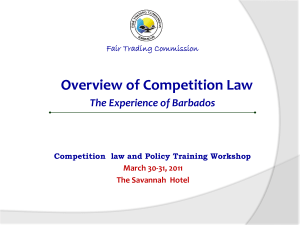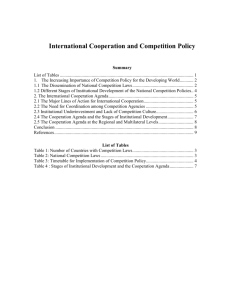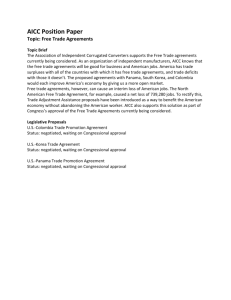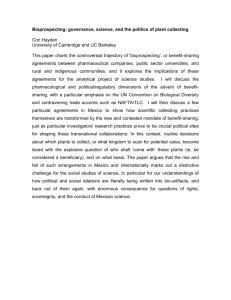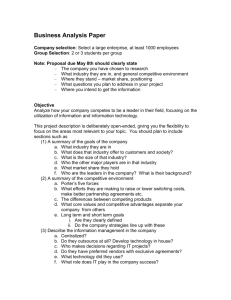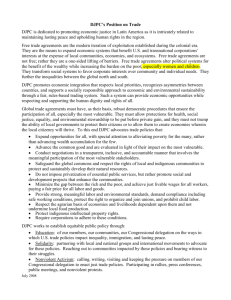Has the agency ever been the subject of a review
advertisement
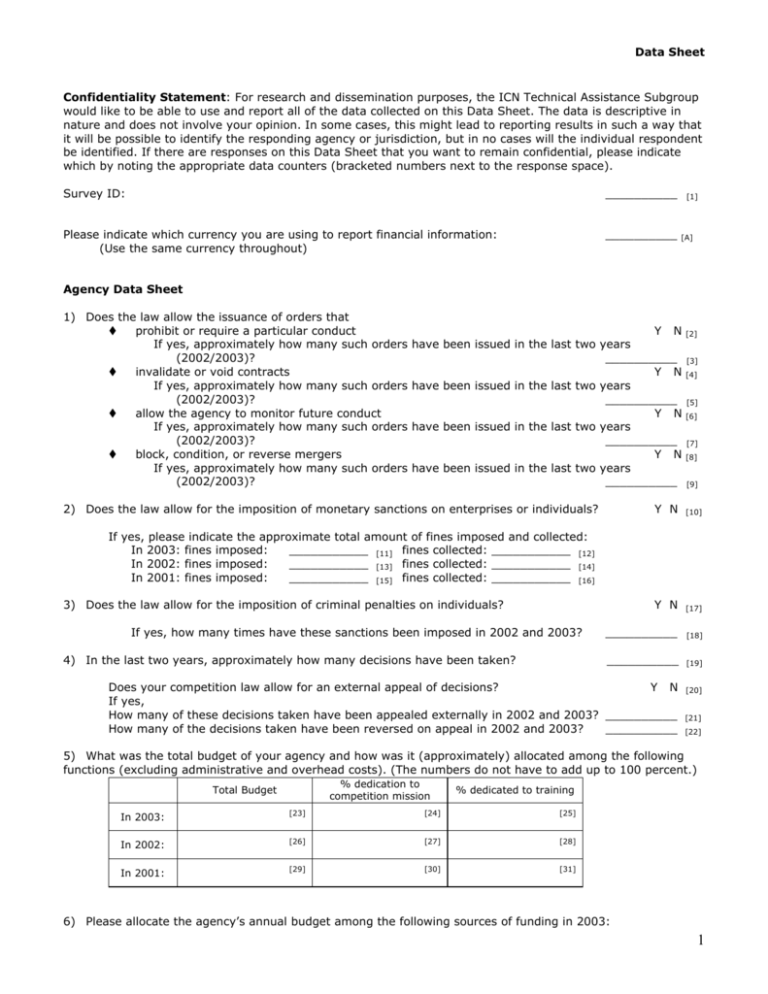
Data Sheet Confidentiality Statement: For research and dissemination purposes, the ICN Technical Assistance Subgroup would like to be able to use and report all of the data collected on this Data Sheet. The data is descriptive in nature and does not involve your opinion. In some cases, this might lead to reporting results in such a way that it will be possible to identify the responding agency or jurisdiction, but in no cases will the individual respondent be identified. If there are responses on this Data Sheet that you want to remain confidential, please indicate which by noting the appropriate data counters (bracketed numbers next to the response space). Survey ID: __________ Please indicate which currency you are using to report financial information: (Use the same currency throughout) __________ [1] [A] Agency Data Sheet 1) Does the law allow the issuance of orders that prohibit or require a particular conduct If yes, approximately how many such orders (2002/2003)? invalidate or void contracts If yes, approximately how many such orders (2002/2003)? allow the agency to monitor future conduct If yes, approximately how many such orders (2002/2003)? block, condition, or reverse mergers If yes, approximately how many such orders (2002/2003)? Y N have been issued in the last two years __________ Y N have been issued in the last two years __________ Y N have been issued in the last two years __________ Y N have been issued in the last two years __________ 2) Does the law allow for the imposition of monetary sanctions on enterprises or individuals? [2] [3] [4] [5] [6] [7] [8] [9] Y N [10] Y N [17] __________ [18] __________ [19] If yes, please indicate the approximate total amount of fines imposed and collected: In 2003: fines imposed: ___________ [11] fines collected: ___________ [12] In 2002: fines imposed: ___________ [13] fines collected: ___________ [14] In 2001: fines imposed: ___________ [15] fines collected: ___________ [16] 3) Does the law allow for the imposition of criminal penalties on individuals? If yes, how many times have these sanctions been imposed in 2002 and 2003? 4) In the last two years, approximately how many decisions have been taken? Does your competition law allow for an external appeal of decisions? Y N If yes, How many of these decisions taken have been appealed externally in 2002 and 2003? __________ How many of the decisions taken have been reversed on appeal in 2002 and 2003? __________ [20] [21] [22] 5) What was the total budget of your agency and how was it (approximately) allocated among the following functions (excluding administrative and overhead costs). (The numbers do not have to add up to 100 percent.) % dedication to competition mission Total Budget % dedicated to training In 2003: [23] [24] [25] In 2002: [26] [27] [28] In 2001: [29] [30] [31] 6) Please allocate the agency’s annual budget among the following sources of funding in 2003: 1 Data Sheet separate line item in the government’s budget line item within the budget of the ministry the agency reports to merger and other filing fees fines and penalties others (please specify): __________________________ [B] Total: ________% ________% ________% ________% ________% 100% [32] [33] [34] [35] [36] 7) What is the agency’s total number of professional staff and how are they allocated among the following disciplines (at the end of 2003)? Total Dedicated to Competition __________ [38] lawyers __________ [37] economists __________ [39] __________ [40] other professionals __________ [41] __________ [42] 8) How many professionals joined or left the agency in: Joined Left 2003 __________ [43] __________ [44] 2002 __________ [45] __________ [46] 2001 __________ [47] __________ [48] 9) Please use the following table to tell us about your agency’s workload, where data are available. “Simple” mergers are those that are completed in the first period of merger review (e.g. the European Commission’s Phase I) and “Complex” mergers are those that proceed to a second period of merger review (e.g., European Commission’s Phase II). If your agency does not draw a distinction between the two, please respond only to the total merger questions. 2003 Total number of merger reviews initiated Total number of merger reviews completed Number of “simple” merger reviews initiated Number of “simple” merger reviews completed Number of “complex” merger reviews initiated Number of “complex” merger reviews completed Number of investigations of anticompetitive conduct initiated Number of investigations of anticompetitive conduct completed Number of investigations of cartel agreements initiated1 Number of investigations of cartel agreements completed Number of investigations of noncartel agreements between competitors initiated2 Number of investigations competitors completed Number of investigations Number of investigations Number of investigations Number of investigations of noncartel agreements between of of of of vertical agreements initiated3 vertical agreements completed abuse of dominance initiated4 abuse of dominance completed 2002 2001 [49] [50] [51] [52] [53] [54] [55] [56] [57] [58] [59] [60] [61] [62] [63] [64] [65] [66] [67] [68] [69] [70] [71] [72] [73] [74] [75] [76] [77] [78] [80] [81] [79] [82] [83] [84] [85] [86] [87] [88] [89] [90] [91] [92] [93] [94] [95] [96] 1 Cartel Agreements include: price fixing, bid rigging, customer allocation agreements, territorial allocation agreements, output restriction agreements. 2 Noncartel agreements between competitors include information exchanges, agreements restricting advertising, agreements to set standards, boycotts and joint refusals to deal, trade associations, and export cartels. 3 Vertical agreements include exclusive dealing, geographic market restrictions, refusals to deal/sell, resale price maintenance, tie-in sale agreements, and quantity forcing. 4 Abuse of dominance includes: charging excessive prices, price discrimination, predatory pricing, price squeezing by integrated firms, refusals to deal/sell, tied selling or product bundling, and raising rivals’ costs. 2
